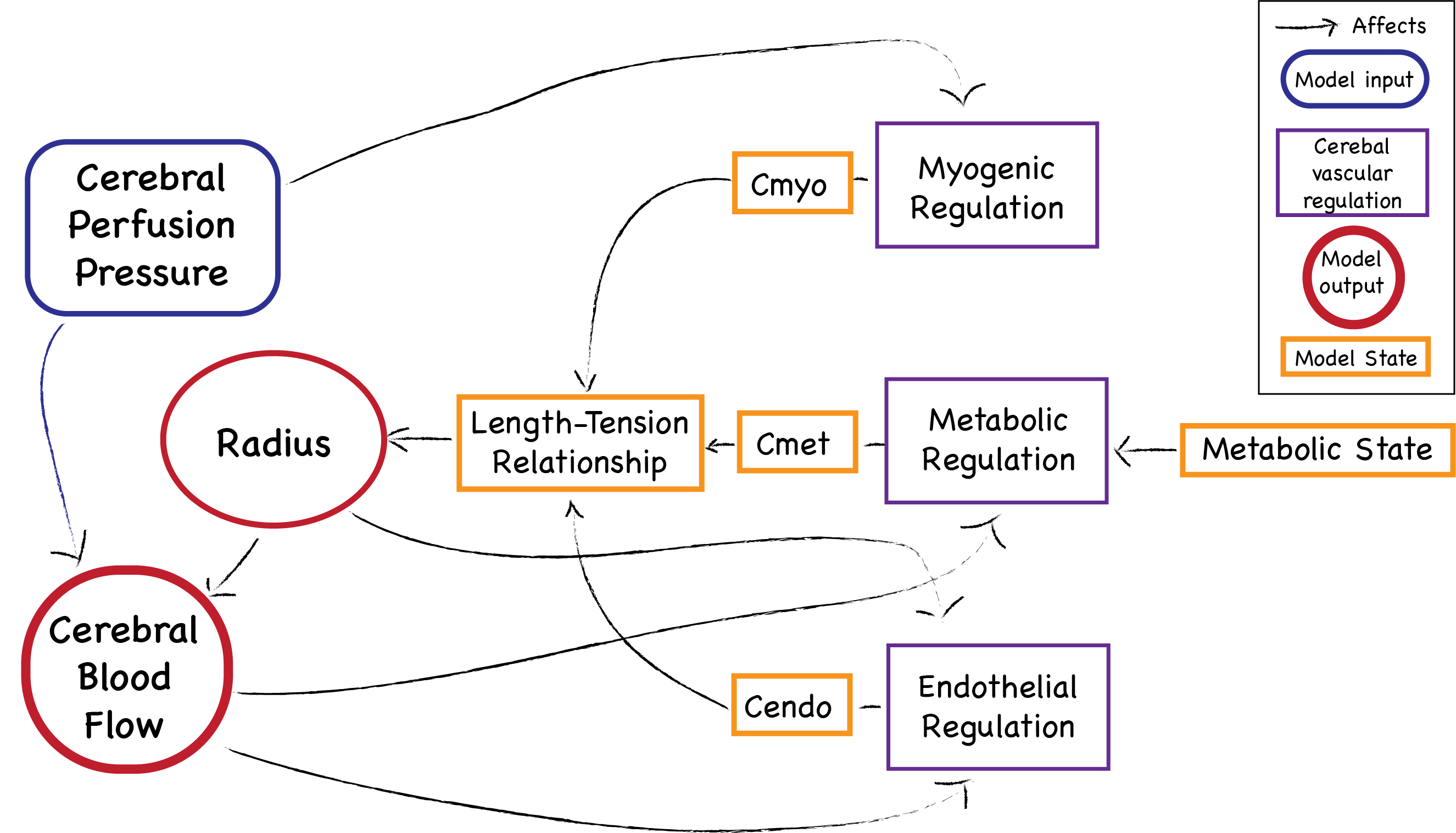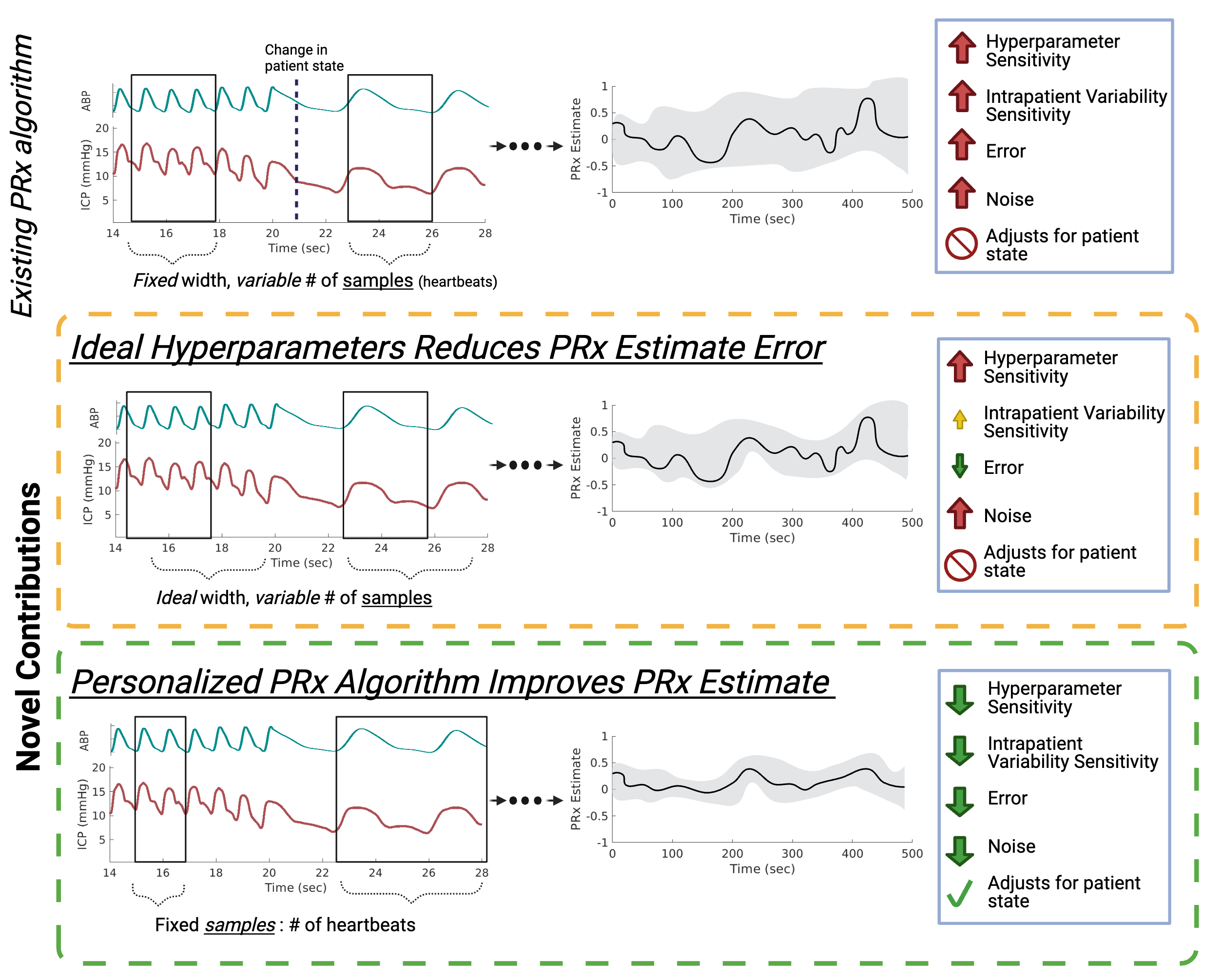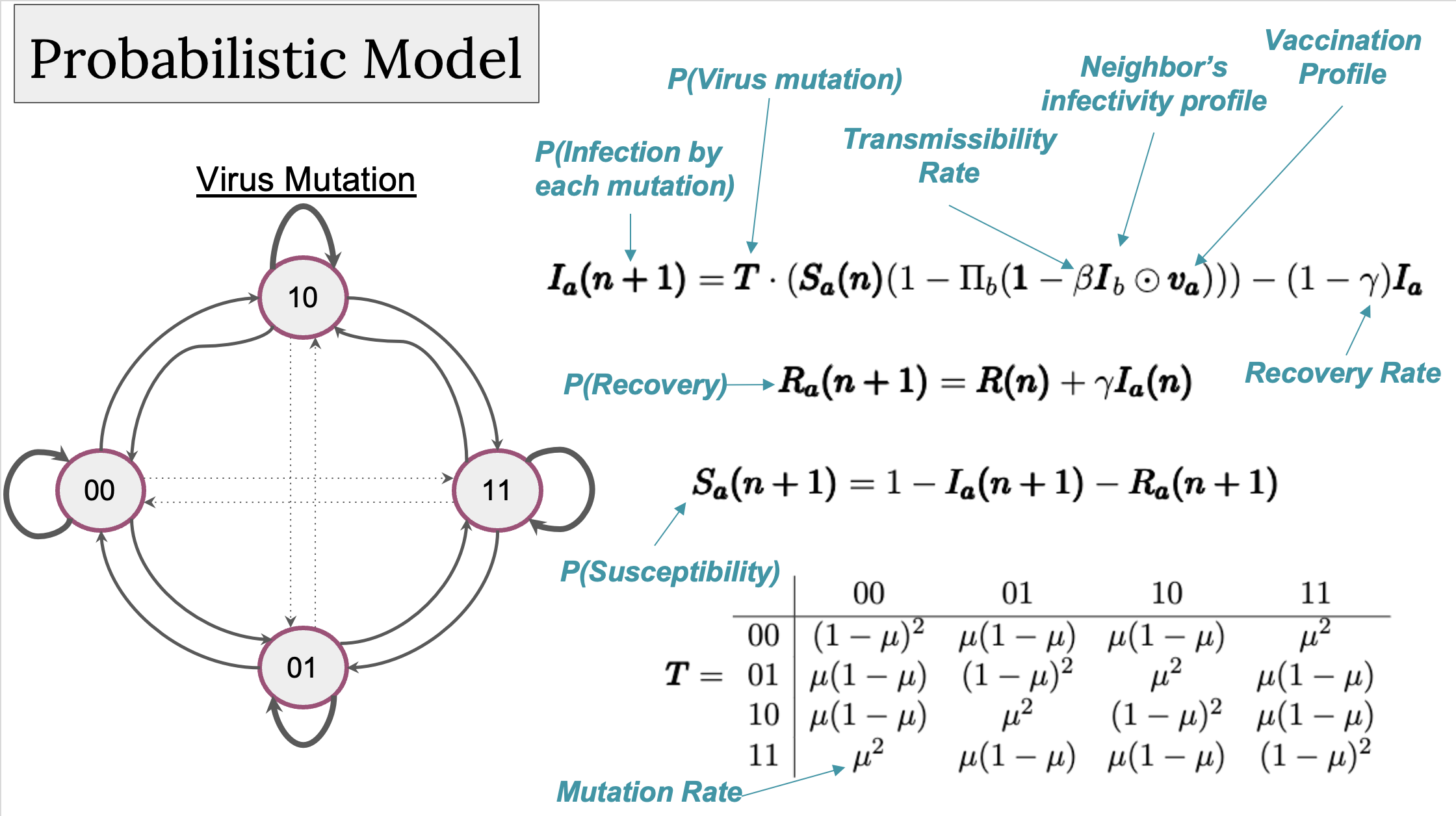Cerebral blood flow is vital for brain function and is acutely controlled through a set of physiological mechanisms known as cerebral vascular regulation (CVR). It remains challenging to directly measure the dynamics and function of individual CVR mechanisms, limiting our ability to understand and optimize brain perfusion, particularly for neurologically injured patients. Digital twins offer an ideal tool for overcoming this gap because they enable estimation, tracking, and forecasting of unmeasured physiological states. Here, we introduce CereBRLSIM (Cerebral Blood Regulation Latent State Inference and Modeling), a digital twin that integrates physiological knowledge and patient data to infer CVR function and predict cerebral dynamics. Using both in vivo experiments and simulated data, CereBRLSIM predicted cerebral hemodynamics with high accuracy and estimated the dynamics of myogenic, endothelial, and metabolic mechanisms underlying CVR. When personalized to neurocritical care patient data, CereBRLSIM differentiated cerebral hemodynamic phenotypes, predicted patient outcomes, and forecasted blood flow with significantly higher accuracy than machine learning models. This work provides a novel, interpretable, and clinically compatible approach for quantifying CVR function and forecasting cerebral blood flow, enabling new opportunities in precision diagnostics and foundational understanding of cerebral hemodynamics, enabling new opportunities in precision diagnostics and foundational understanding of cerebral hemodynamics.
...




